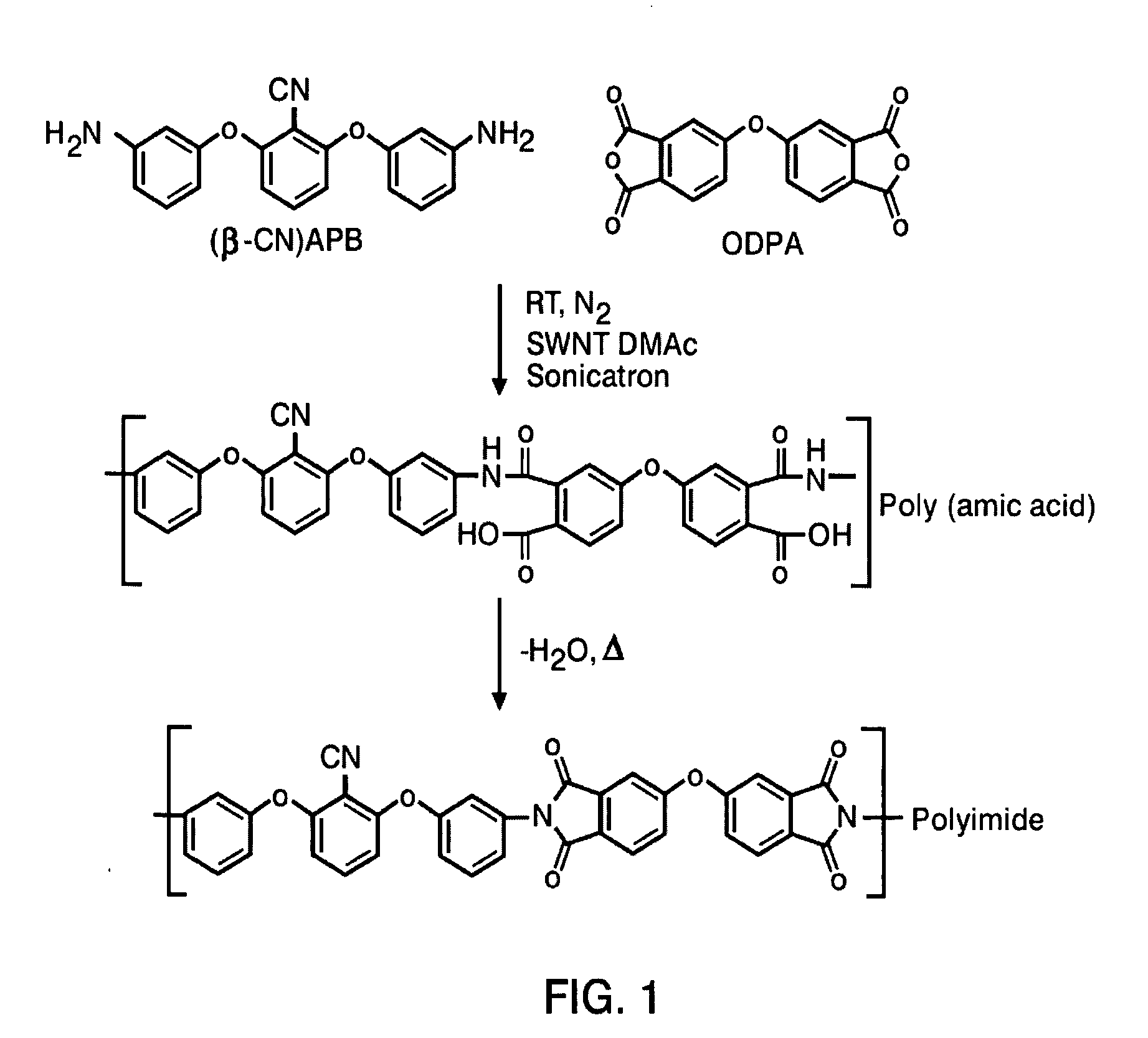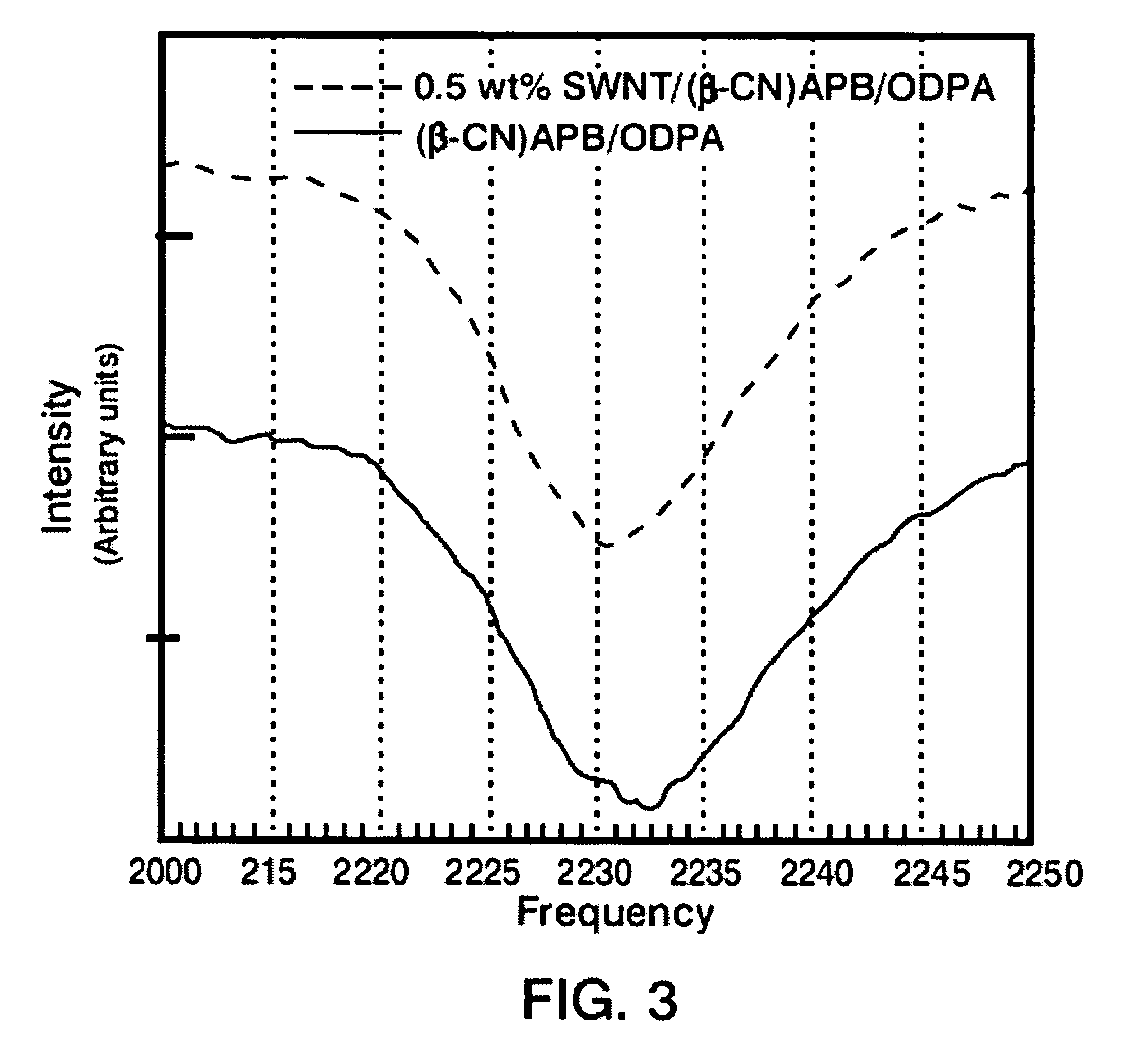Dispersions of carbon nanotubes in polymer matrices
a technology of carbon nanotubes and polymer matrices, which is applied in the directions of special tyres, transportation and packaging, vehicle components, etc., can solve the problems of inability thermodynamic instability, and difficulty in prior efforts to achieve a high degree of carbon nanotube dispersion in a polymer matrix
- Summary
- Abstract
- Description
- Claims
- Application Information
AI Technical Summary
Benefits of technology
Problems solved by technology
Method used
Image
Examples
example
[0027] The procedures described below were performed using purified laser ablated (LA) and high pressure carbon monoxide (CO) decomposition (HiPco) single wall carbon nanotubes (SWNTs). The LA and HiPco SWNTs were purchased from Rice University and Carbon Nanotechnologies, Inc., respectively. The LA and HiPco SWNTs were about 1.2-1.6 nm and 0.8 nm in diameter, respectively. The concentration of the catalysts in both the purified LA (Ni and Co) and HiPco (Fe) SWNTs was less than 3 wt % based on elemental analysis (Desert Analytics, ICP-MS). The polymer chosen for this work was (β-CN)APB / ODPA polyimide, the structure of which is shown in FIG. 1. Through energy-filtered transmission electron microscopy (EELS), (β-CN) APB / ODPA polyimide has been shown to wet SWNTs very well. This particular polyimide was selected because of the presence of a nitrile functionalized aromatic moiety. Nitrile bearing aromatic compounds are generally good electron acceptors due to their ability to accommodat...
PUM
| Property | Measurement | Unit |
|---|---|---|
| Dispersion potential | aaaaa | aaaaa |
| Electric charge | aaaaa | aaaaa |
| Amphoteric | aaaaa | aaaaa |
Abstract
Description
Claims
Application Information
 Login to View More
Login to View More - R&D
- Intellectual Property
- Life Sciences
- Materials
- Tech Scout
- Unparalleled Data Quality
- Higher Quality Content
- 60% Fewer Hallucinations
Browse by: Latest US Patents, China's latest patents, Technical Efficacy Thesaurus, Application Domain, Technology Topic, Popular Technical Reports.
© 2025 PatSnap. All rights reserved.Legal|Privacy policy|Modern Slavery Act Transparency Statement|Sitemap|About US| Contact US: help@patsnap.com



